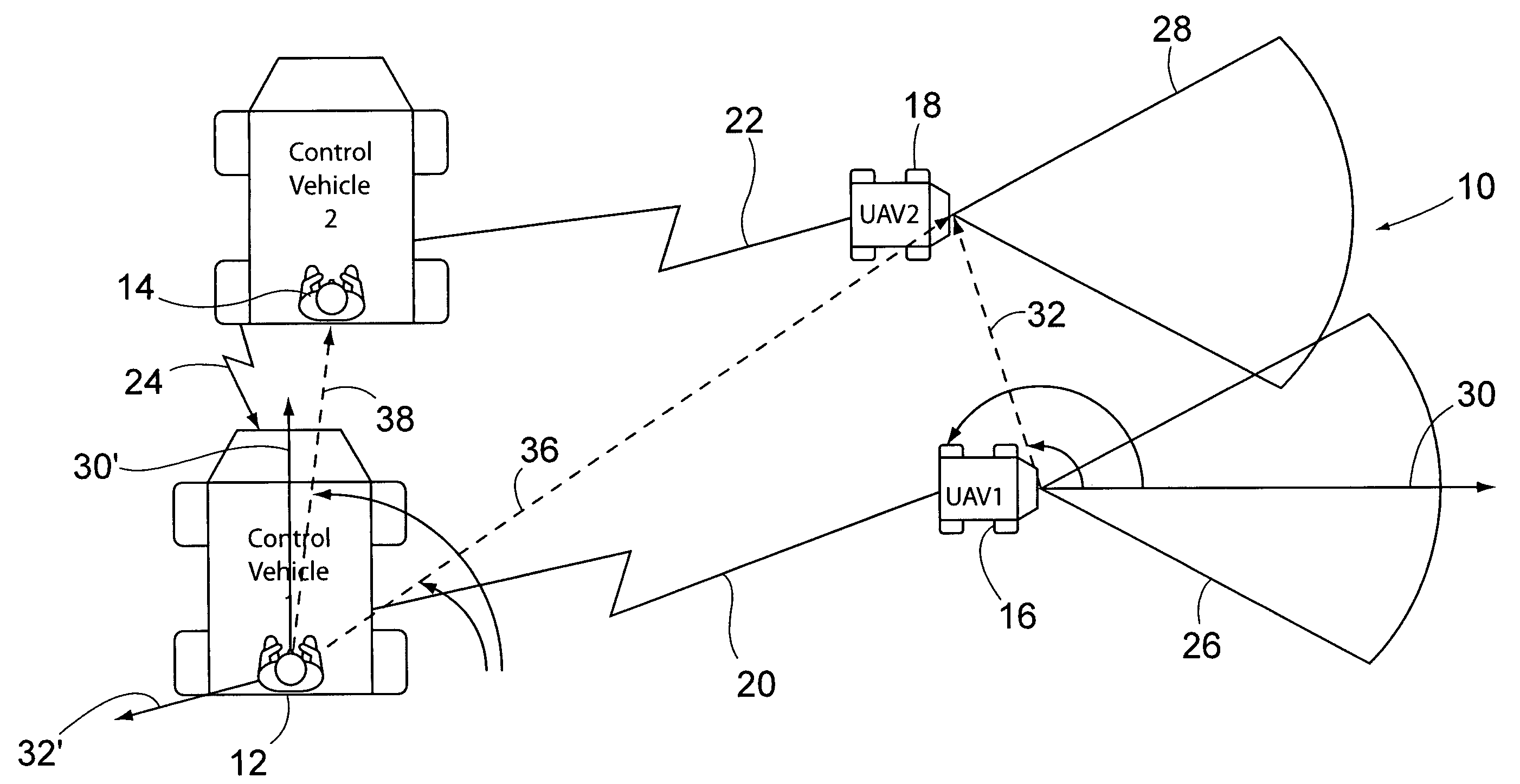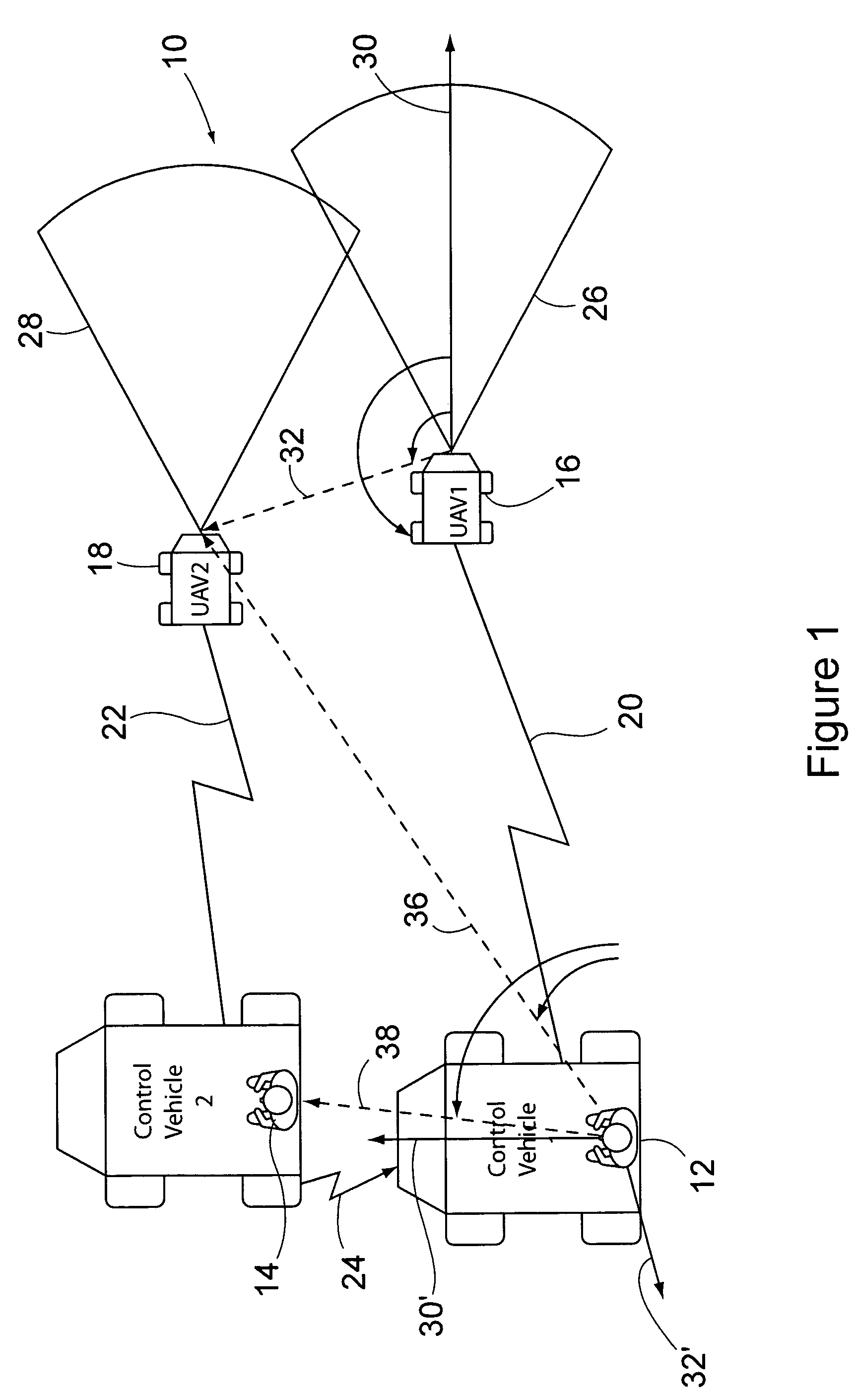Synthetically generated sound cues
a sound cue and synthesizer technology, applied in the field of synthesizing and telecommunication systems, can solve the problems of less than optimal team performance, operator of one uav may not accurately know the position of another uav, and inability to quickly and correctly comprehend and assess
- Summary
- Abstract
- Description
- Claims
- Application Information
AI Technical Summary
Benefits of technology
Problems solved by technology
Method used
Image
Examples
Embodiment Construction
[0020]Referring to the accompanying drawings in which like reference numbers indicate like elements, FIG. 1 illustrates a telecommunication system constructed in accordance with the principles of the present invention.
[0021]The present invention takes advantage of the ability of humans to use sound cues to judge the azimuth, elevation, and distance of a sound source. These audio cues can be simulated in electronic systems that feed headphones, loudspeakers, or other sound producing devices. The listener thus perceives the produced sound as coming from a particular position, even though the speakers are at different positions than the perceived position of the produced sound. To convey a particular azimuth, these systems typically create delays between the reception of a sound by one ear and the reception of the same sound by the other ear. In addition to the interaural delay, the system may create a slight difference in intensity, or volume, as received by one ear over the other to ...
PUM
 Login to View More
Login to View More Abstract
Description
Claims
Application Information
 Login to View More
Login to View More - R&D
- Intellectual Property
- Life Sciences
- Materials
- Tech Scout
- Unparalleled Data Quality
- Higher Quality Content
- 60% Fewer Hallucinations
Browse by: Latest US Patents, China's latest patents, Technical Efficacy Thesaurus, Application Domain, Technology Topic, Popular Technical Reports.
© 2025 PatSnap. All rights reserved.Legal|Privacy policy|Modern Slavery Act Transparency Statement|Sitemap|About US| Contact US: help@patsnap.com



